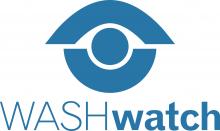
For years, WASHWatch has served as the go-to source for tracking global progress towards water, sanitation and hygiene access. This information hub serves as a key tool for civil society to hold governments to account, improve transparency and advocating for change. Of course, this information isn’t just for civil society. Governments can also track their progress and gain a better understanding of the challenges and opportunities within their country to inform better policy. By bringing together fragmented data in a single platform, WASHWatch has enabled users to see the full picture of WASH progress in a way that hasn’t been possible otherwise.
To date, WASHWatch has worked at global, regional and national levels, showing commitments and progress at over these levels. Through a new partnership with the Water Point Data Exchange (WPDx), WASHwatch is now presenting localized data.
Similar to WASHWatch, WPDx serves as a platform for aggregating data. However, WPDx focuses on a very small scale – individual water point information. Recognizing the many hundreds of stakeholders that carry out some form of water point mapping, WPDx serves as a global framework for sharing water point data. As of the time of this post, WPDx participants have shared information on over 300,000 water points in nearly 30 countries around the world.
This data contains a wealth of information on the water points, including location, status, water point type, payment, management, and much more. This rich body of data is being used around the world to influence policy, design programs, learn about sustainability, and much more.
By bringing these two powerful platforms together, it is possible to learn more than ever before. For the first time, users can find information about the national context and the local status of water services all in the same place. Aggregating this information allows for advocacy, learning, policy progress, and service improvements based on evidence that considers the national context while also responding to specific realities on the ground.
To access the WPDx data, check out the “WASH Sector Monitoring” tab under the country profiles. The pilot for this partnership includes water point data for 11 countries with significant data available: Afghanistan, Burkina Faso, Ethiopia, Kenya, Liberia, Malawi, Nicaragua, Sierra Leone, South Sudan, Tanzania, and Uganda.
This post was cross-posted with permission from the WASHWatch blog.
